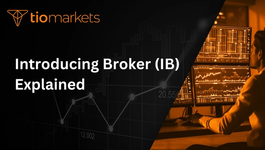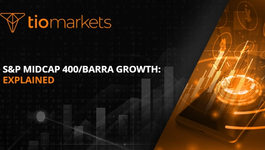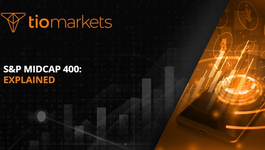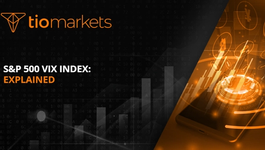Alerts: Explained | TIOmarkets
BY TIOmarkets
|June 28, 2024In the world of trading, alerts serve as a crucial tool for traders to stay updated on market movements and changes. They are essentially notifications that are triggered when specific conditions, set by the trader, are met in the financial markets. These alerts can be based on a variety of factors such as price levels, volume changes, or technical analysis indicators. They are designed to help traders monitor the markets more efficiently and make informed trading decisions.
Alerts can be particularly useful in volatile markets where price movements can happen rapidly. They allow traders to set parameters for when they would like to be notified, freeing them from the need to constantly monitor the markets. This can help traders to react quickly to market changes, potentially allowing them to take advantage of trading opportunities as they arise or to protect their positions from potential losses.
Types of Trading Alerts
There are several types of trading alerts that traders can use, each with its own specific purpose and use case. The type of alert used can depend on the trader's strategy, the market they are trading in, and their personal preferences.
Price alerts, for example, notify traders when a specific asset reaches a certain price. Volume alerts, on the other hand, alert traders when the trading volume of an asset reaches a certain level. This can indicate increased interest in the asset and potentially signal a significant price move.
Price Alerts
Price alerts are perhaps the most common type of trading alert. Traders set a specific price level for an asset, and when that price level is reached, the alert is triggered. This can be particularly useful for traders who are looking to enter or exit a position at a specific price. It can also be used to alert traders to potential breakout or reversal points.
Price alerts can be set for both when the price rises above a certain level (known as a 'resistance' level) and when it falls below a certain level (known as a 'support' level). These levels are often identified through technical analysis and can be significant points in the market where price movements may accelerate or reverse.
Volume Alerts
Volume alerts are triggered when the trading volume of an asset reaches a certain level. High trading volume can indicate strong interest in an asset and can often precede significant price movements. As such, volume alerts can be a useful tool for traders looking to catch these movements early.
Volume alerts can be particularly useful in markets where liquidity can vary significantly, such as in the cryptocurrency market. In these markets, sudden increases in trading volume can signal the start of a major price move.
Setting Up Trading Alerts
Setting up trading alerts can be a straightforward process, but it does require some understanding of the markets and the specific conditions that you want to set for your alerts. Most trading platforms will have a feature that allows you to set up alerts, with various options for customization.
The first step in setting up a trading alert is to select the asset that you want to monitor. This could be a specific stock, currency pair, commodity, or any other tradable asset. Once you have selected your asset, you can then set the conditions for your alert. This could be a specific price level, a change in volume, or a technical indicator such as a moving average crossover.
Customizing Alerts
Most trading platforms will allow you to customize your alerts to suit your trading strategy. This could involve setting multiple alerts for different conditions, or setting alerts that are triggered by a combination of conditions. For example, you could set an alert to be triggered when the price of an asset rises above a certain level and the trading volume also increases. This could indicate a strong upward trend and a potential trading opportunity.
In addition to setting the conditions for your alerts, you can also usually customize how you receive your alerts. This could be via email, SMS, or a notification on your trading platform. Some platforms may also allow you to set up automated actions in response to an alert, such as placing a trade.
Alerts and Risk Management
Trading alerts can also be a valuable tool for risk management. By setting alerts for certain market conditions, traders can be notified of potential risks to their positions. For example, a trader could set an alert to be triggered if the price of an asset they are holding falls below a certain level. This could indicate a potential loss and prompt the trader to take action to mitigate this risk.
Similarly, alerts can be used to protect profits. A trader could set an alert to be triggered when the price of an asset they are holding rises above a certain level. This could indicate a potential profit, and the trader could choose to close their position and realize this profit.
Limitations of Trading Alerts
While trading alerts can be a valuable tool, it's important to be aware of their limitations. Alerts are based on the conditions that you set, and as such, they are only as good as your understanding of the markets and your ability to identify significant market conditions.
Furthermore, alerts are not a guarantee of profits. They are simply a tool to help you monitor the markets more efficiently. It's still up to you to make informed trading decisions based on the information provided by your alerts.
False Alerts
One potential limitation of trading alerts is the possibility of false alerts. These are instances where an alert is triggered, but the market conditions do not result in a profitable trading opportunity. This can happen if the market conditions change rapidly after the alert is triggered, or if the conditions for the alert were not set accurately.
False alerts can be frustrating, but they are a part of trading. It's important to use alerts as a tool to aid your trading, but not to rely on them entirely. Always use your own judgement and analysis in conjunction with your alerts.
Alerts and Market Volatility
Another potential limitation of trading alerts is that they may not be as effective in highly volatile markets. In these markets, price movements can be rapid and unpredictable, and an alert that is triggered may quickly become irrelevant.
However, this does not mean that alerts are useless in volatile markets. They can still provide valuable information and help you to monitor the markets more efficiently. But it's important to be aware of the limitations and to use alerts as one tool among many in your trading toolkit.
Conclusion
Trading alerts are a valuable tool for traders, helping to monitor the markets more efficiently and make informed trading decisions. They can be customized to suit your trading strategy and can be used for both identifying trading opportunities and managing risk.
However, like any tool, they have their limitations and should be used in conjunction with other trading tools and strategies. By understanding how to use alerts effectively and being aware of their limitations, traders can use them to enhance their trading and potentially improve their trading outcomes.
Start Trading with Precision
Ready to elevate your trading experience? Join the 170,000+ traders across 170 countries who have already chosen TIOmarkets as their trusted forex broker. With access to over 300 instruments across 5 markets, our platform is designed to provide you with the low fees and robust tools you need to trade Forex, indices, stocks, commodities, and futures markets effectively. Enhance your skills with our comprehensive educational resources and step-by-step guides. Don't miss out on the opportunity to trade with precision. Create a Trading Account today and start your journey towards successful trading!
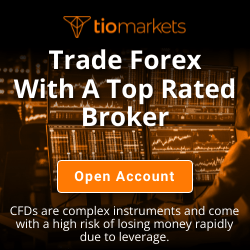
Risk disclaimer: CFDs are complex instruments and come with a high risk of losing money rapidly due to leverage. You should consider whether you understand how CFDs work and whether you can afford to take the high risk of losing your money. Never deposit more than you are prepared to lose. Professional client’s losses can exceed their deposit. Please see our risk warning policy and seek independent professional advice if you do not fully understand. This information is not directed or intended for distribution to or use by residents of certain countries/jurisdictions including, but not limited to, USA & OFAC. The Company holds the right to alter the aforementioned list of countries at its own discretion.
Join us on social media

Behind every blog post lies the combined experience of the people working at TIOmarkets. We are a team of dedicated industry professionals and financial markets enthusiasts committed to providing you with trading education and financial markets commentary. Our goal is to help empower you with the knowledge you need to trade in the markets effectively.
